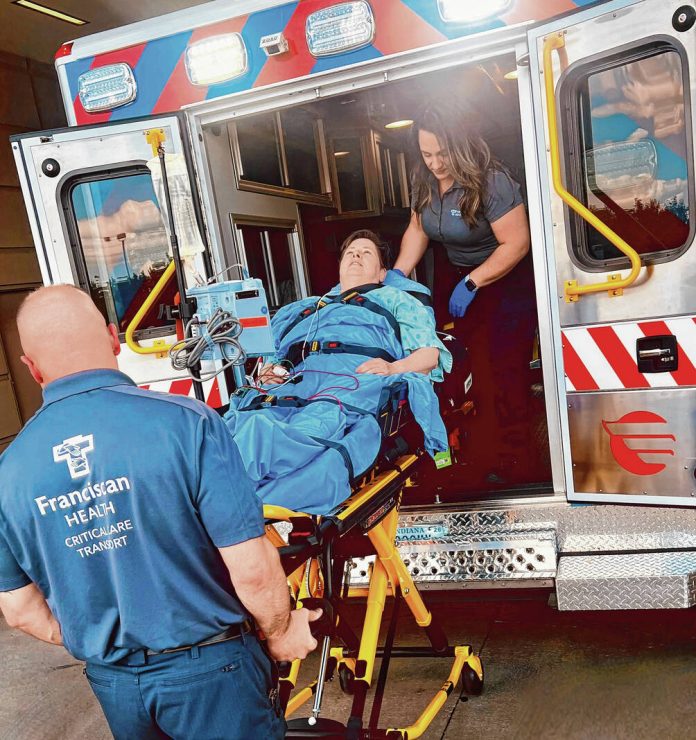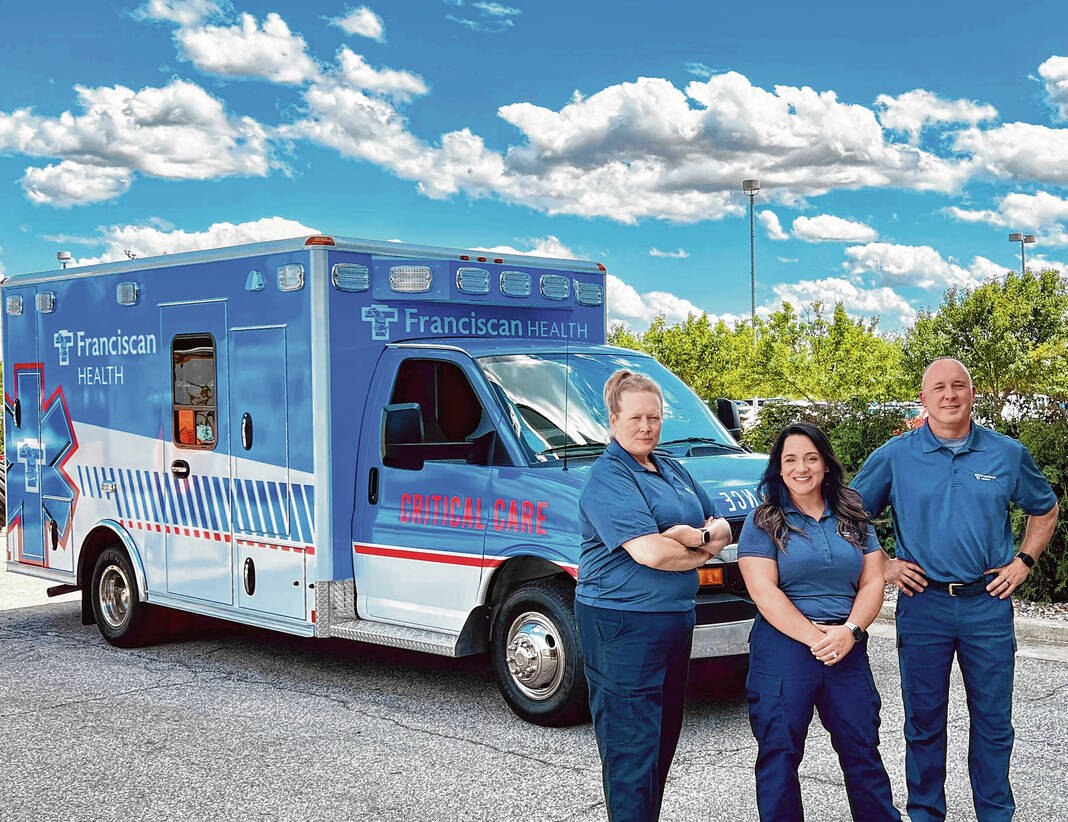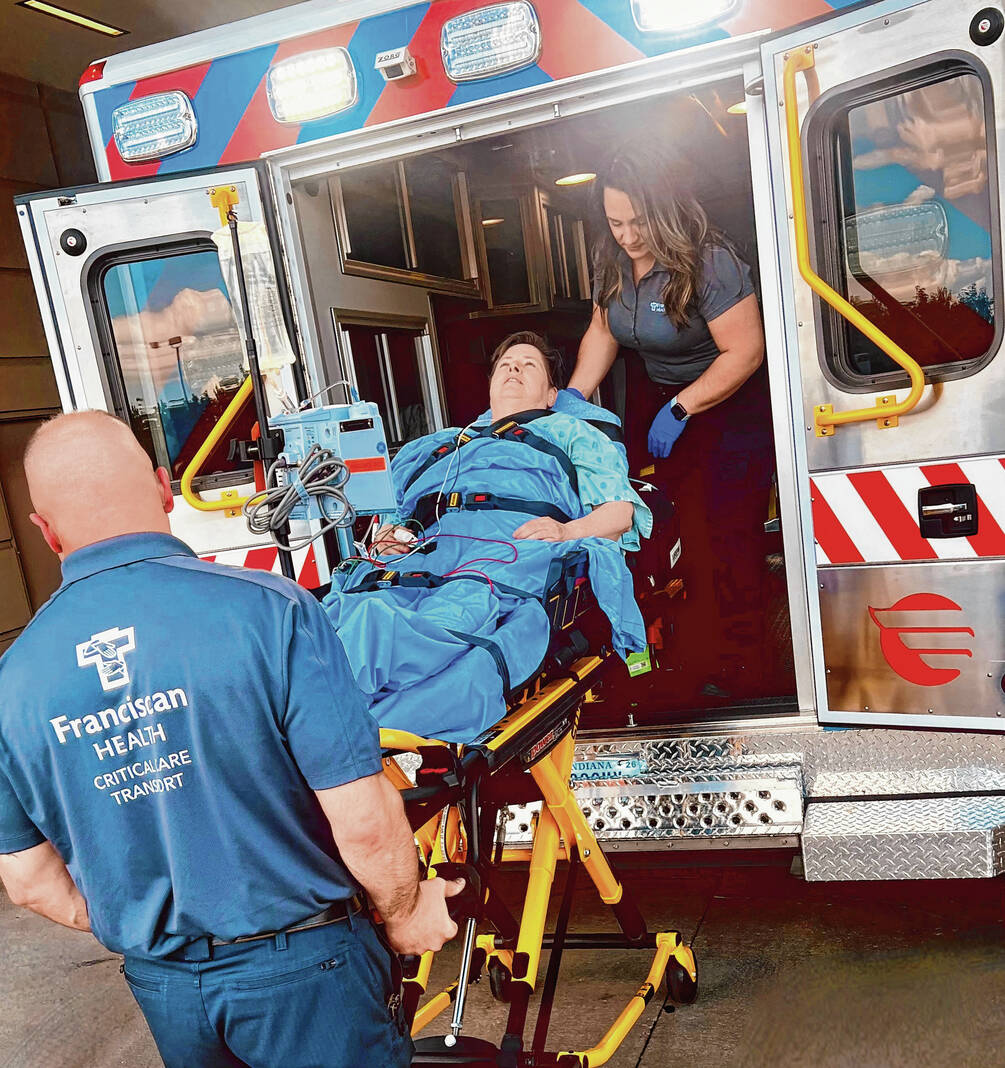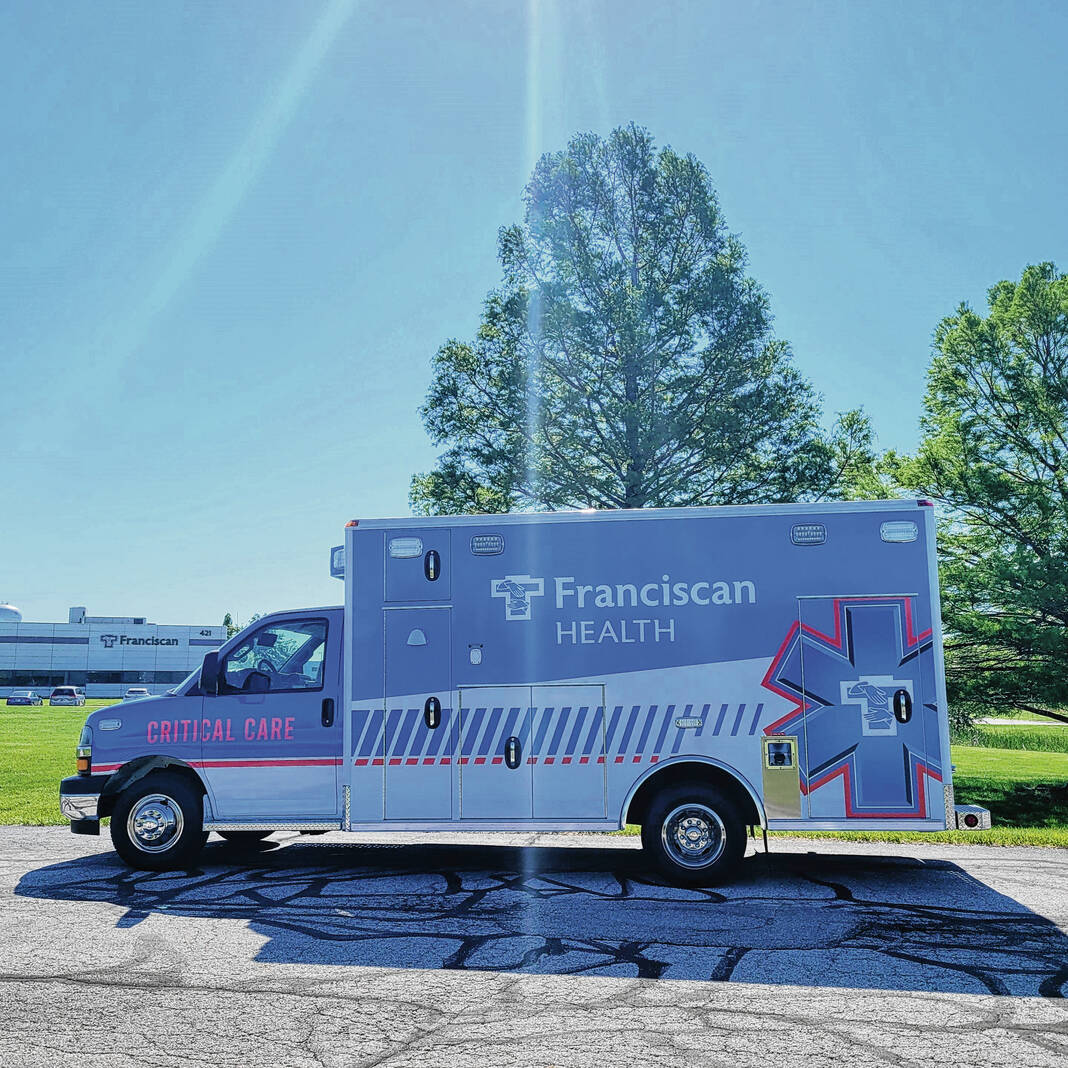
Franciscan Health Indianapolis ambulance staff practices loading a critically ill patient in anticipation of the launch of the hospital system’s critical care ambulance transport service. Franciscan Health has started offering its own transport for patients in need of urgent care for heart attacks and strokes from Johnson, Decatur and Putnam counties. Submitted photos
For central Indiana patients suffering from the most severe heart attacks and strokes, every second is precious.
Getting those patients the care they need to survive is critical. But for those coming from smaller hospitals surrounding Indianapolis, that process can be unwieldy and needlessly complicated.
One local hospital has taken steps to provide transportation themselves.
Franciscan Health Indianapolis has announced the start of its critical care ambulance transport for patients coming from Johnson, Decatur and Putnam counties. The ambulance service will also pick up people from Columbus and Shelbyville.
Without such a service, patients in outlying communities such as Franklin would often be taken to more distant hospitals that happen to offer transportation. Now, they can take advantage of some of the most cutting-edge care for strokes and heart attacks Franciscan Health Indianapolis offers.
“Franciscan Health recognized a critical need in our partnering communities and decided to provide a solution to that dilemma,” said Melissa Hill, critical care transport manager for Franciscan Health Indianapolis.
Hospitals offering their own critical care transport has become more common in Indiana and throughout the United States. Large hospital systems such as IU Health and Ascension have had their own ambulance services for a number of years.
Even Franciscan Health, in its Crown Point system, offers it. The health care system started investigating the option in the Indianapolis region.
At the heart of the decision is two of Franciscan Health’s most advanced treatment options. The specialty ambulance focuses on patients requiring thrombectomy, a way to treat blood clots in the brain’s of stroke victims. Franciscan Health Indianapolis offers endovascular thrombectomy, a minimally-invasive robotic surgical procedure used to treat acute ischemic stroke and providing post-procedural care.
Research has show mechanical thrombectomy can lead to fewer deaths while also preventing some of the debilitating effects of stroke.
Franciscan is also using the service to transport individuals suffering from ST-elevation myocardial infarction, or STEMI. Caused by the extensive blockage of a coronary artery, these heart attacks are considered one of the most severe types — mortality rates at 30 days are between 2.5% to 10%, according to the National Institute of Health.
But because Franciscan didn’t have their own transport, patients would have to use either a paramedic ambulance or contact another facility that did have a service to bring their patients.
“What was happening is, these smaller hospitals in the outlying Indiana that would call a service that wasn’t necessarily closer, but they’d call because those places had transport to get their patients there,” Hill said. “What these small communities would also have to do was take an ambulance out of the 911 rotation and send them on a long-distance transfer. So it was taking an asset out of the community as well.”
Recognizing that need, Franciscan Health Indianapolis leaders opted to create the service in central Indiana. In preparation, ambulance staff received enhanced training in stroke and heart attack care.
The focus was on Johnson County, due to its large population, proximity to Franciscan Health Indianapolis and its relationship with Johnson Memorial Health in Franklin. Officials also tapped Decatur County, where Decatur County Memorial Hospital serves patients, and Putnam County, home of Putnam County Hospital. The cities of Columbus and Shelbyville are also included in the transport range.
By having a transport service directly to Franciscan Health Indianapolis, these patients will now receive care closer to home and begin treatment sooner. The Franciscan ambulance will be available 24 hours a day, seven days a week and calls will be coordinated through the Franciscan Transfer Center.
The ambulance will operate with auto-launch protocols which trigger an automatic dispatch to the affected patient’s site while staff may still be on the phone coordinating details.
“When they’re calling in the initial contact, immediately another person from the transfer center is calling my crew and heading them that way,” Hill said. “It’s just minutes before our crew is out and headed to get that patient.”
A dedicated crew was recently trained and hired to staff the ambulance, which features state-of-the-art equipment to address complications with the patient groups.
“My crew is really excited. They really like this, because many of them have come from a 911 background. Some of them have done critical care in the past,” Hill said. “Just to be able to offer this service to this area is super exciting.”








